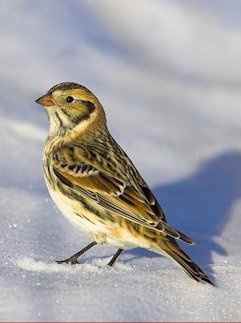|
During most of the year, a bird's chief task is survival. For the Tufted
Titmouse, typical of many songbirds, the season for display, courtship, and
nesting in most areas of the united States lasts only from March through June.
The rest of the year is spent in small flocks, flying from tree to bush in
search of insects and seeds.
In northern regions, the nesting season is even shorter. Arctic-breeding
songbirds, such as the
Lapland Longspurs,
reach their breeding grounds in
northern Alaska in late May, and by early July all chicks have hatched. For
Lapland Longspurs, the annual cycle involves many months of waiting for the
next breeding season.
|

